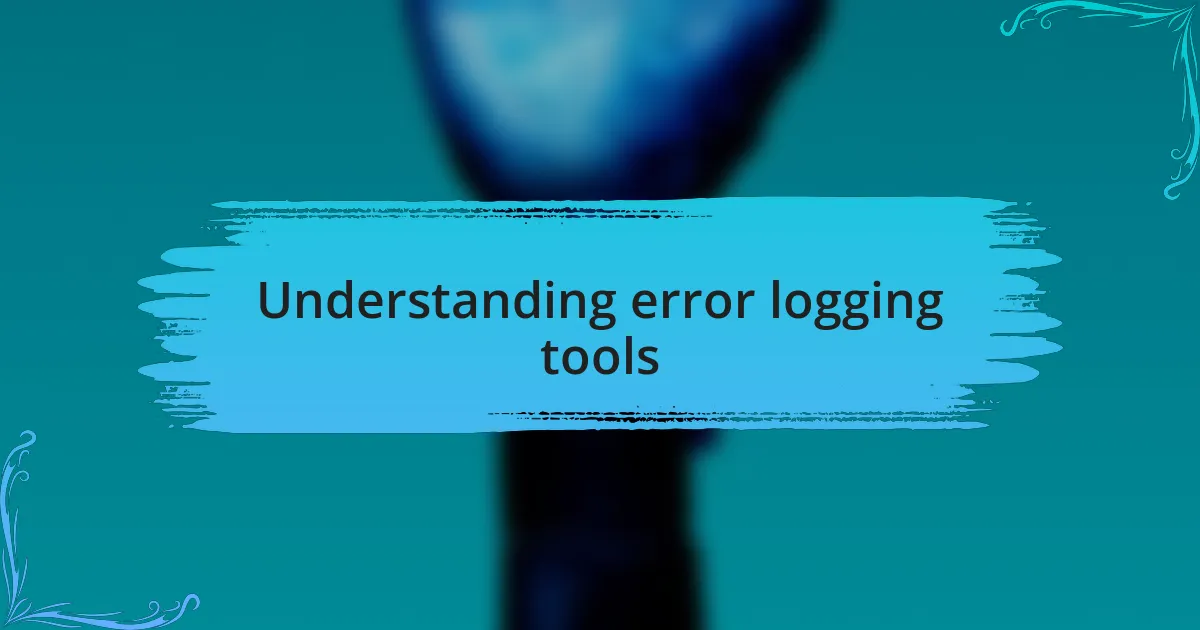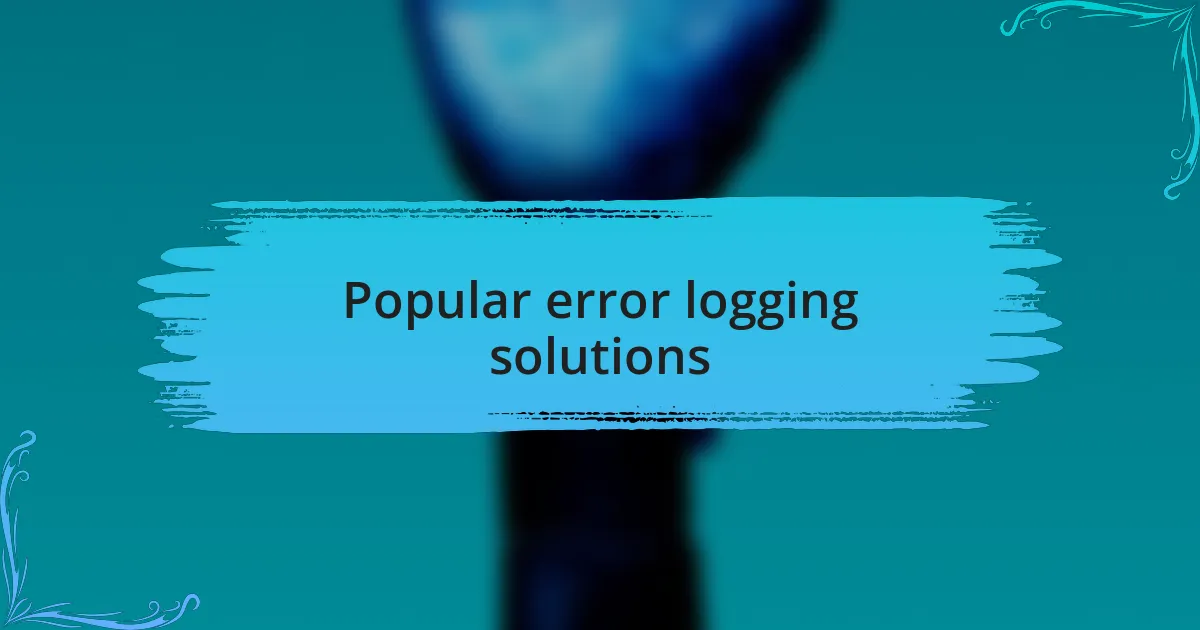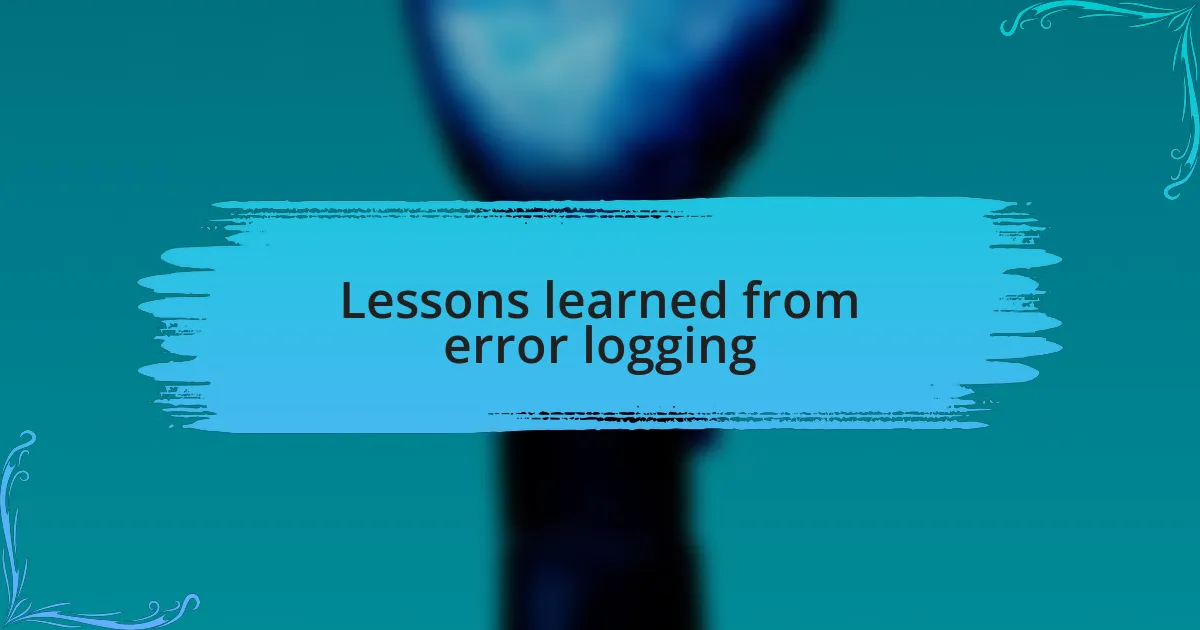Key takeaways:
- Error logging tools are crucial for identifying and resolving issues quickly, providing clarity in troubleshooting and improving user experience.
- Popular tools like Sentry, Rollbar, and ELK Stack offer varying features that help in real-time error tracking and customized log analysis.
- Understanding the context of errors can uncover performance insights and enhance server reliability during peak hours.
- Fostering a culture of open communication around errors transforms setbacks into learning opportunities and boosts team morale.

Understanding error logging tools
Error logging tools have become essential in my experience as a developer. They help capture unexpected situations that arise during the app’s lifecycle. I remember a time when a minor bug caused a significant user experience issue, and without an effective logging tool, pinpointing the source would have been like searching for a needle in a haystack.
When I first started using these tools, I was amazed by how much clarity they provided. The ability to track specific error messages in real time allowed my team to respond swiftly to user complaints. Have you ever faced a situation where an error just seemed to appear out of nowhere? That’s when the power of good logging truly shines; it not only reveals the symptoms but also uncovers the root causes.
It’s also interesting to see how error logging tools vary in sophistication. Some offer just basic logging features, while others provide detailed analyses and user session tracking. I recall integrating a comprehensive tool that not only logged errors but also suggested potential fixes. It was like having a knowledgeable assistant help navigate the complexities of bug resolution—an invaluable resource for any developer.

Popular error logging solutions
When it comes to popular error logging solutions, I’ve found that tools like Sentry and LogRocket consistently stand out due to their powerful capabilities. Sentry, for instance, not only tracks errors but also provides detailed context, such as the user’s device and browser. I can recall a project where Sentry alerted us to an issue that affected our mobile users, helping us resolve it before it escalated into a bigger problem. Have you ever wished for a crystal ball to predict where users might stumble? Sentry brings you one step closer to that with its insightful alerts.
Another tool worth highlighting is Rollbar, which I’ve come to appreciate for its seamless integration with various frameworks. The real-time feedback it offers can be a game-changer, especially during a critical launch. I remember a particularly hectic release day when Rollbar helped us catch a last-minute bug while we were still pushing updates. How reassuring it is to have that kind of safety net, allowing us to focus more on delivering value rather than constantly worrying about unseen glitches.
For those interested in open-source solutions, I recommend considering ELK Stack (Elasticsearch, Logstash, and Kibana). While it requires more setup, the level of customization it offers is unmatched. In one project, I configured ELK to filter logs based on severity, which helped my team prioritize our bug-fixing efforts effectively. Can you imagine the satisfaction of having tailored tools that adapt to your specific needs? That’s where ELK truly shines, transforming raw logs into something meaningful and actionable.

Lessons learned from error logging
When diving into error logging, I’ve learned the importance of not just identifying errors but understanding their context. For instance, while working on a web app, I noticed that certain errors only appeared during specific times of day. By analyzing the logs, we discovered that our server was struggling under peak traffic hours. How enlightening it was to realize that error logs weren’t just a record of issues but a treasure trove of insights shaping our performance!
Another lesson I drew from error logging relates to the value of proactive communication. I recall a scenario where repeated error alerts about a database connection led us to implement a more robust notification system. This small change not only streamlined our workflow but also fostered collaboration within the team, ensuring everyone was aligned. Have you experienced that moment of clarity when a shift in approach transforms your team dynamics?
Lastly, I’ve found that implementing a culture of embracing errors has been truly transformative. In one development cycle, instead of viewing errors as setbacks, we started to discuss them openly, turning each instance into a learning opportunity. This shift not only improved our product but also strengthened our team morale. Have you ever wondered how a simple change in perspective can elevate a team’s spirit? The impact is profound, creating an environment where innovation thrives alongside accountability.